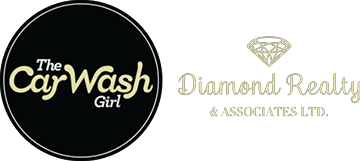At this point in the market, most carwash operators have started to realize the value in selling all or a portion of their real estate under a sale-leaseback. Under this strategy, the operator signs a long-term lease and sells the real estate to an investor looking for a completely passive investment and fixed return (known as a net-leased property).
In the majority of sale-leasebacks, the operator retains full ownership of the equipment. Private investors have proven to be the buyer profile that will pay the highest price for a net-leased carwash, so we will focus this article on this buyer profile only. Generally, these investors are in a 1031 exchange and are looking for a safe landing place for their gain.
Has COVID-19 had an impact on property value?
To some people’s surprise, real estate values for single-tenant properties, in general, went up in 2020, and cap rates compressed. Few property types have seen a 36-month rise in property value quite like the net-leased carwash industry.
According to CoStar, in 2020 there were 63 net-lease carwash properties leased to 28 different operators sold to private investors at an average price of $3.38 million and an average cap rate of 6.67%. The average sale cap rate was 16 basis points lower than in 2019 (meaning values increased). For operators with larger credit, cap rates compressed 24 basis points.
Our company was one of the most active groups in selling net-leased carwash properties to private investors and sold 16 net-leased carwashes in 2020 to private investors throughout the country. The firm also achieved multiple offers on nearly every carwash property it listed in 2020.
Where has this demand come from?
The easy answer is: a lack of supply. There were approximately 33% fewer net-lease carwash listings brought to market in 2020 when compared to 2019. Beyond the supply constraints, there were three main drivers that caused a rise in property values.
First, more private investors became aware of the deprecation benefits of real estate leased to carwashes. Outside of gas stations, which can have environmental concerns, there are no other net-lease property types that provide a passive investor with as much depreciation. Large net-lease property owners purchased carwashes to offset their passive gains.
Second, COVID-19 exposed weaknesses for many industries, particularly low-margin industries that were not able to sustain a decrease in revenue. The express carwash industry showed the contrary.
Most of the top operators continued to be successful during COVID-19, and any temporary losses in March and April seem to have been recouped by the end of the year. The touchless nature of the express carwash — coupled with the reoccurring membership revenue structure — positioned net-lease carwashes as one of the best-performing asset classes for net-lease buyers. Private investors began to favor express carwashes as well as certain other single-tenant auto uses, quick-service restaurants (with a drive-thru) and grocery stores.
The third driver of demand is that, although cap rates are at historic lows for the carwash industry, they are still much higher than most other net-lease sectors. For example, a quick-service restaurant leased to an operator that is the same credit profile as a carwash operator would trade between 50 to 100 basis points lower cap rate than the carwash (meaning a higher value and larger multiple). The same thing goes for other single-tenant sectors, such as banks, drug stores, grocery stores, medical and even certain sit-down restaurants.
Some of this is due to the fact that such property types as quick-service restaurants have a lower price point, attract a larger buyer pool and are perceived to be less of a single-purpose use, but ultimately the discount in price does not accurately reflect the risk. These reasons have made net-lease carwashes a very attractive vehicle for investors that are simply priced out of these other traditional net-lease real estate sectors but still want a safe place to put their money.
Where is the net-leased carwash industry headed?
Cap rates still have room to compress even further (meaning higher values and larger multiples for the real estate). As consolidation continues to take place and operators enhance their credit profiles, net-lease buyers will pay premiums for the real estate. The net-lease industry has seen a major lack of supply in the first quarter of 2021 primarily due to a delay in new projects caused by COVID-19 and unprecedented buyer demand. This should create upward momentum on carwash real estate value.
Why should all operators at least consider a sale-leaseback?
Currently, the multiple that an operator can achieve by selling the real estate (by itself under a long-term lease) far exceeds the multiple the operator can achieve by selling the real estate and the business together. Traditionally, sale-leasebacks have been considered a viable financing method and a vehicle for quick expansion.
However, with how large the multiples have become for real estate on the net-lease market, sale-leasebacks can also be thought of as a great way of taking “chips off the table” at a much higher multiple than the business and real estate would ever be worth. Even more compelling is the fact that operations sold by themselves without the real estate (leased sites) are seeing peak EBITDA multiples. Thus, the sum of the parts when sold to different buyer profiles are worth more than the whole when sold to one buyer.
What should operators avoid when selling their real estate?
Operators can get enamored with high values for their real estate and get carried away with unrealistic rents that put their operating business in an unsustainable position. This is especially true with new construction sites that have no prior track record. It is always intriguing to operators to sell new construction sites to generate cash quickly, but, if possible, sites with a previous track record typically sell for higher values and lower cap rates.
